
Scientists at the University of Sydney used a quantum computer to slow and directly observe a key chemical reaction process, unveiling details previously unseen due to rapid timescales. This breakthrough offers new insights for materials science, drug design, and other fields.
What happens in femtoseconds in nature can now be observed in milliseconds in the lab.
Scientists at the University of Sydney have achieved a groundbreaking feat, directly observing a critical chemical reaction process by utilizing a quantum computer to slow it down by a factor of 100 billion times.
Joint lead researcher and PhD student, Vanessa Olaya Agudelo, said: “It is by understanding these basic processes inside and between molecules that we can open up a new world of possibilities in materials science, drug design, or solar energy harvesting.
“It could also help improve other processes that rely on molecules interacting with light, such as how smog is created or how the ozone layer is damaged.”
Credit: Sebastian Zentilomo
The Conical Intersection Phenomenon
Specifically, the research team witnessed the interference pattern of a single atom caused by a common geometric structure in chemistry called a “conical intersection.”
Conical intersections are known throughout chemistry and are vital to rapid photochemical processes such as light harvesting in human vision or photosynthesis.
Chemists have tried to directly observe such geometric processes in chemical dynamics since the 1950s, but it is not feasible to observe them directly given the extremely rapid timescales involved.
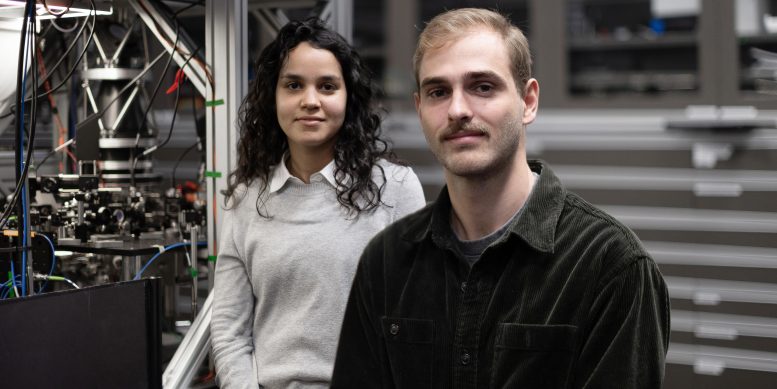
Lead authors Vanessa Olaya Agudelo and Dr. Christophe Valahu in front of the quantum computer in the Sydney Nanoscience Hub used in the experiment. Credit: Stefanie Zingsheim/University of Sydney
To get around this problem, quantum researchers in the School of Physics and the School of Chemistry created an experiment using a trapped-ion quantum computer in a completely new way. This allowed them to design and map this very complicated problem onto a relatively small quantum device – and then slow the process down by a factor of 100 billion.
Their research findings were published on August 28 in the journal Nature Chemistry.
“In nature, the whole process is over within femtoseconds,” said Ms. Olaya Agudelo from the School of Chemistry. “That’s a billionth of a millionth – or one quadrillionth – of a second.”
“Using our quantum computer, we built a system that allowed us to slow down the chemical dynamics from femtoseconds to milliseconds. This allowed us to make meaningful observations and measurements.
“This has never been done before.”
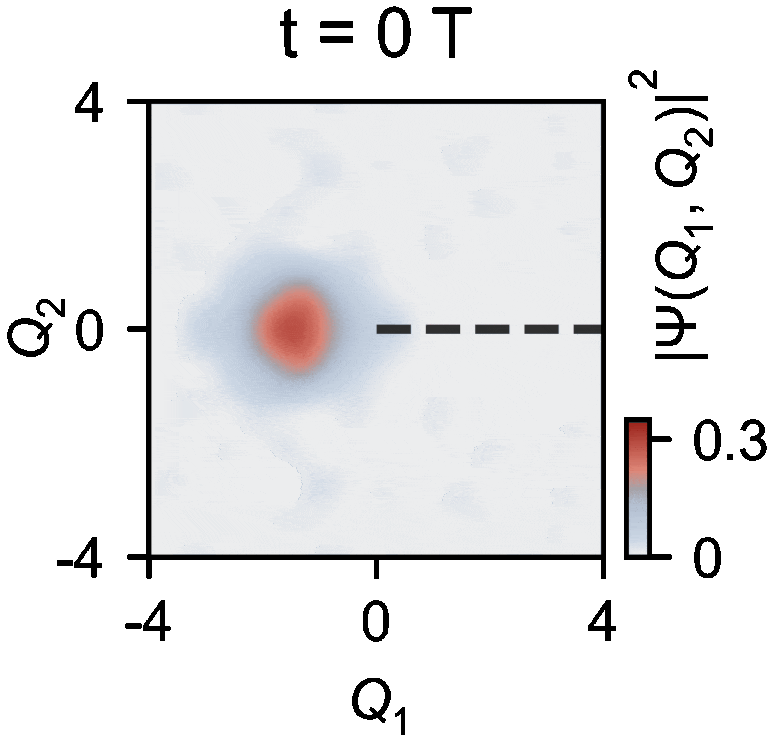
A wavepacket evolving around a conical intersection, measured experimentally using a trapped-ion quantum computer at the University of Sydney.
To observe how a wavepacket behaves around a simulated conical intersection, researchers used a single trapped ion – a single charged atom of ytterbium confined in a vacuum by electric fields.
It was then controlled and measured by applying a complex and precise sequence of laser pulses.
The mathematical model that describes conical intersections was then engineered into the trapped-ion system.
The ion was then allowed to evolve around the engineered conical intersection.
Researchers then constructed a movie of the ion’s evolution around the conical intersection (see GIF). Each frame of the GIF shows an image outlining the probability of finding the ion at a specific set of coordinates.
Credit: University of Sydney
Quantum Technology’s Role
Joint lead author Dr. Christophe Valahu from the School of Physics said: “Until now, we have been unable to directly observe the dynamics of ‘geometric phase’; it happens too fast to probe experimentally.
“Using quantum technologies, we have addressed this problem.”
Dr. Valahu said it is akin to simulating the air patterns around a plane wing in a wind tunnel.
“Our experiment wasn’t a digital approximation of the process – this was a direct analog observation of the quantum dynamics unfolding at a speed we could observe,” he said.
In photochemical reactions such as photosynthesis, by which plants get their energy from the Sun, molecules transfer energy at lightning speed, forming areas of exchange known as conical intersections.
This study slowed down the dynamics in the quantum computer and revealed the tell-tale hallmarks predicted – but never before seen – associated with conical intersections in photochemistry.
Collaboration and Future Implications
Co-author and research team leader, Associate Professor Ivan Kassal from the School of Chemistry and the University of Sydney Nano Institute, said: “This exciting result will help us better understand ultrafast dynamics – how molecules change at the fastest timescales.
“It is tremendous that at the University of Sydney, we have access to the country’s best programmable quantum computer to conduct these experiments.”
The quantum computer used to conduct the experiment is in the Quantum Control Laboratory of Professor Michael Biercuk, the founder of quantum startup, Q-CTRL. The experimental effort was led by Dr. Ting Rei Tan.
Dr. Tan, a co-author of the study, said: “This is a fantastic collaboration between chemistry theorists and experimental quantum physicists. We are using a new approach in physics to tackle a long-standing problem in chemistry.”
Reference: “Direct observation of geometric-phase interference in dynamics around a conical intersection” by C. H. Valahu, V. C. Olaya-Agudelo, R. J. MacDonell, T. Navickas, A. D. Rao, M. J. Millican, J. B. Pérez-Sánchez, J. Yuen-Zhou, M. J. Biercuk, C. Hempel, T. R. Tan and I. Kassal, 28 August 2023, Nature Chemistry.
DOI: 10.1038/s41557-023-01300-3
The research was supported by grants from the US Office of Naval Research; the US Army Research Office Laboratory for Physical Sciences; the US Intelligence Advanced Research Projects Activity; Lockheed Martin; the Australian Defence Science and Technology Group, Sydney Quantum; a University of Sydney-University of California San Diego Partnership Collaboration Award; H. and A. Harley; and by computational resources from the Australian Government’s National Computational Infrastructure.

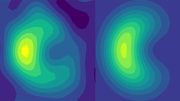


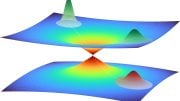

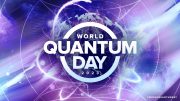

I don’t understand from the article what mechanism slowed the reaction.
Hey Thad, I had found myself similarly dissatisfied as I read along until I read the foot note of the mini video recording of the actual example:
“ measured experimentally using a trapped-ion quantum computer at the University of Sydney.
To observe how a wavepacket behaves around a simulated conical intersection, researchers used a single trapped ion – a single charged atom of ytterbium confined in a vacuum by electric fields.
It was then controlled and measured by applying a complex and precise sequence of laser pulses.
The mathematical model that describes conical intersections was then engineered into the trapped-ion system.
The ion was then allowed to evolve around the engineered conical intersection.
Researchers then constructed a movie of the ion’s evolution around the conical intersection (see GIF). Each frame of the GIF shows an image outlining the probability of finding the ion at a specific set of coordinates.”
Hope that satisfies your curiosity.
-Manny